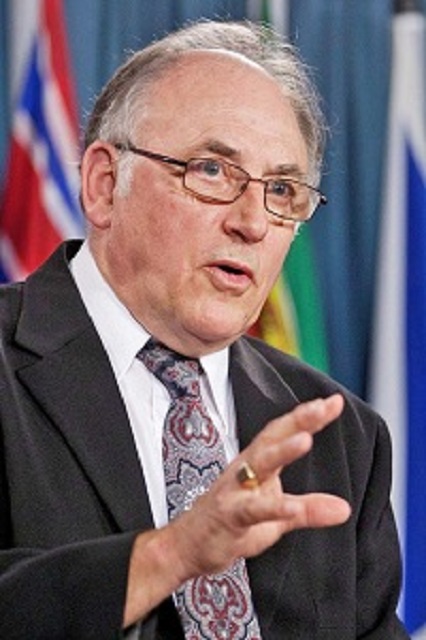Business
INDIGENOUS CONSULTATION AND ENGAGEMENT AT CANADA’S ENERGY AND UTILITY REGULATORS

INDIGENOUS CONSULTATION AND ENGAGEMENT AT CANADA’S ENERGY AND UTILITY REGULATORS
CAMPUT is the Association of Canada’s provincial, territorial and federal energy and utility regulators. CAMPUT’s purpose is to improve energy and utility regulations in Canada and to educate and train our members. We are highlighting the work of two of our members, the Canadian Nuclear Safety Commission and the Canada Energy Regulator, in the areas of Indigenous consultation and engagement.
The Canadian Nuclear Safety Commission (CNSC) has a broad mandate, including to protect health, safety and security, and the environment, and to disseminate objective scientific, technical and regulatory information to the public, including Indigenous groups. The CNSC is also an agent of the Crown with the responsibility of ensuring the Duty to Consult is met before making decisions. The CNSC has explored various means to ensure that Indigenous groups’ voices are heard and integrated into Commission decision-making. The CNSC has also committed to developing on-going, respectful relationships that allow open dialogue in the spirit of reconciliation and trust building.
First, the CNSC focused in-house and put into place policies, practices and processes with an overarching regulatory framework and management system to confirm that CNSC decisions uphold the Honor of the Crown. This included a Regulatory Document (REGDOC 3.2.2, 2016) that sets out the Commission expectations on how proponents play a significant role in working with Indigenous groups to address concerns and mitigate impacts and / or treaty rights, early in design and project proposal stages.
The CNSC also has a dedicated team with expertise in Indigenous consultation and engagement that conducts ongoing engagement with Indigenous groups with interests in nuclear facilities. The long-term goal is to help build relationships and trust and help CNSC staff learn more about the history, rights, interests, and culture of the Indigenous groups. The CNSC continues to work with Indigenous groups to ensure they are provided the opportunity to present their views and give oral presentations at Commission hearings.
To support this participation, the CNSC has put in place a Participant Funding Program that in part, has helped Indigenous groups hire consultants to review technical scientific reports, fund Indigenous Knowledge studies, cover community meeting costs, pay Honoraria for elders, and costs for travel and preparations for hearings. Further, Commission hearings have taken place in communities near facilities to allow easier access by Indigenous groups, and teleconferencing, web access, live streaming and simultaneous translation in Indigenous languages has also been used.
The CNSC acknowledges the importance of working with and integrating Indigenous Knowledge alongside scientific and regulatory information in its assessments and regulatory processes, where appropriate and where authorized by Indigenous communities. Indigenous ways of knowing and cultural context enhance the CNSC’s understanding of potential impacts of projects and strengthens project reviews and regulatory oversight.
The CNSC also runs its own Independent Environmental Monitoring Program (IEMP) that seeks Indigenous participation in taking samples from public areas around nuclear facilities and measuring and analyzing the amount of radiological and hazardous substances in the samples. Following discussions with many Indigenous groups, it was recognized that they could play a key role in identifying country foods and traditional harvest areas and participate as part of the IEMP. Getting meaningful monitoring results to Indigenous communities is a key priority for the CNSC.
The Canada Energy Regulator (CER) welcomes change. In August 2019 we transitioned from the National Energy Board to the Canada Energy Regulator. The CER has been given new legislation and is focused on improvement. Reconciliation with Indigenous Peoples is a pillar of our renewal.
Our legislation directs us to find meaningful ways to engage with Indigenous Peoples. We embrace our new mandate and have woven specific deliverables on reconciliation into every aspect of our work.
Our vision: to transform the way we work with Indigenous Peoples, recognizing their unique cultures, knowledge and histories; and endeavor to reflect a renewed Nation- to-Nation relationship based on the recognition of rights, respect, cooperation and partnership.
We recognize reconciliation is an ongoing process that occurs in the context of evolving Indigenous-Crown relationships. Sitting around the table with Indigenous communities, we are working to find new ways to co-manage regulatory oversight. We recognize the inseparable connection Indigenous Peoples have with the land and the water, and we will work collaboratively to protect them. We are also ensuring we equip the communities with the right skills and support to make the changes we envision a reality.
Indigenous Advisory and Monitoring Committees (IAMC) bring together Indigenous and federal leaders to provide advice to regulators and to monitor the Trans Mountain Expansion and Line pipelines. Members share the goals of safety and protection of environmental and Indigenous interests in the lands and water. Indigenous participation does not equal support or opposition for a project, allowing for better information-sharing within the group. This initiative represents a foundational change in the way the CER and the Federal government work with Indigenous Peoples. It aims to develop an enduring and meaningful relationship for the entire lifecycle of the project. We believe our work with the IAMCs can lead the way on co- management of regulatory oversight activities and has the potential to be applied across the rest of Canada’s energy system.
Here are some other ways we are changing how we work with Indigenous Peoples:
- We are meeting with Indigenous communities earlier on who may be impacted by projects we regulate to better understand their concerns and share how the CER holds companies accountable for the protection of Indigenous rights and interests.
- We are adapting our hearing processes to allow for different paths of Indigenous participation. This includes sharing Indigenous Knowledge, allowing for ceremonies, selecting specific locations for the hearing that are convenient to Indigenous participants or elders, and allowing for remote participation if travel is not possible.
- We are developing a National Indigenous Monitoring Policy so that all CER-regulated infrastructure projects can benefit from Indigenous Knowledge when they are being build and operated.
- We are training our employees to understand more about Indigenous history, culture and contemporary issues facing Indigenous Peoples in Canada. This training ensures that consideration of Indigenous rights and interests and becomes embedded in our way of working.
Background. The Canadian Energy Compendium is an annual Energy Council of Canada initiative which provides opportunity for cross-sectoral collaboration on a topic of shared interest across the Canadian energy sector, produced with the support of Canada’s national energy associations and Energy Council of Canada’s members. The stories contributed to the 2019 edition, Indigenous Energy Across Canada, highlight current conversations celebrating Canada’s dynamic energy sector and encouraging its continuous improvement.

Thanks to Todayville for helping us bring our members’ stories of collaboration and innovation to the public.
Click to read a foreward from JP Gladu, Chief Development and Relations Officer, Steel River Group; Former President and CEO, Canadian Council for Aboriginal Business.

JP Gladu, Chief Development and Relations Officer, Steel
River Group; Former President & CEO, Canadian Council for Aboriginal Business

Jacob Irving, President of Energy Council of Canada
The Canadian Energy Compendium is an annual initiative by the Energy Council of Canada to provide an opportunity for cross-sectoral collaboration and discussion on current topics in Canada’s energy sector. The 2020 Canadian Energy Compendium: Innovations in Energy Efficiency is due to be released November 2020.
Click to read comments about this series from Jacob Irving, President of the Energy Council of Canada.
Hydro-Québec takes partnerships, environmental measures and sharing of wealth to new levels
Business
Federal government’s ‘fudget budget’ relies on fanciful assumptions of productivity growth

From the Fraser Institute
By Niels Veldhuis and Jake Fuss
Labour productivity isn’t growing, it’s declining. And stretching the analysis over the Trudeau government’s time in office (2015 to 2023, omitting 2020 due to COVID), labour productivity has declined by an average of 0.8 per cent. How can the Trudeau government, then, base the entirety of its budget plan on strong labour productivity growth?
As the federal budget swells to a staggering half a trillion dollars in annual spending—yes, you read that correctly, a whopping $538 billion this year or roughly $13,233 per Canadian—and stretches over 430 pages, it’s become a formidable task for the media to dissect and evaluate. While it’s easy to spot individual initiatives (e.g. the economically damaging capital gains tax increase) and offer commentary, the sheer scale and complexity of the budget make it hard to properly evaluate. Not surprisingly, most post-budget analysts missed a critically important assumption that underlies every number in the budget—the Liberals’ assumption of productivity growth.
Indeed, Canada is suffering a productivity growth crisis. “Canada has seen no productivity growth in recent years,” said Carolyn Rogers, senior deputy governor at the Bank of Canada, in a recent speech. “You’ve seen those signs that say, ‘In emergency, break glass.’ Well, it’s time to break the glass.”
The media widely covered this stark warning, which should have served as a wake-up call, urging the Trudeau government to take immediate action. At the very least, this budget’s ability—or more accurately, inability—to increase productivity growth should have been a core focus of every budget analysis.
Of course, the word “productivity” puts most people, except die-hard economists, to sleep. Or worse, prompts the “You just want us to work harder?” questions. As Rogers noted though, “Increasing productivity means finding ways for people to create more value during the time they’re at work. This is a goal to aim for, not something to fear. When a company increases productivity, that means more revenue, which allows the company to pay higher wages to its workers.”
Clearly, labour productivity growth remains critical to our standard of living and, for governments, ultimately determines the economic growth levels on which they base their revenue assumptions. With $538 billion in spending planned for this year, the Trudeau government better hope it gets its forecasts right. Otherwise, the $39.8 billion deficit they expect this year could be significantly higher.
And here’s the rub. Buried deep in its 430-page budget is the Trudeau government’s assumption about labour productivity growth (page 385, to be exact). You see, the Liberals assume the economy will grow at an average of 1.8 per cent over the next five years (2024-2028) and predict that half that growth will come from the increase in the supply of labour (i.e. population growth) and half will come from labour productivity growth.
However, as the Bank of Canada has noted, labour productivity growth has been non-existent in Canada. The Bank uses data from Statistics Canada to highlight the country’s productivity, and as StatsCan puts it, “On average, over 2023, labour productivity of Canadian businesses fell 1.8 per cent, a third consecutive annual decline.”
In other words, labour productivity isn’t growing, it’s declining. And stretching the analysis over the Trudeau government’s time in office (2015 to 2023, omitting 2020 due to COVID), labour productivity has declined by an average of 0.8 per cent. How can the Trudeau government, then, base the entirety of its budget plan on strong labour productivity growth? It’s what we call a “fudget budget”—make up the numbers to make it work.
The Trudeau fudget budget notwithstanding, how can we increase productivity growth in Canada?
According to the Bank of Canada, “When you compare Canada’s recent productivity record with that of other countries, what really sticks out is how much we lag on investment in machinery, equipment and, importantly, intellectual property.”
Put simply, to increase productivity we need businesses to increase investment. From 2014 to 2022, Canada’s inflation-adjusted business investment per worker (excluding residential construction) declined 18.5 per cent from $20,264 to $16,515. This is a concerning trend considering the vital role investment plays in improving economic output and living standards for Canadians.
But the budget actually hurts—not helps—Canada’s investment climate. By increasing taxes on capital gains, the government will deter investment in the country and encourage a greater outflow of capital. Moreover, the budget forecasts deficits for at least five years, which increases the likelihood of future tax hikes and creates more uncertainty for entrepreneurs, investors and businesses. Such an unpredictable business environment will make it harder to attract investment to Canada.
This year’s federal budget rests on fanciful assumptions about productivity growth while actively deterring the very investment Canada needs to increase living standards for Canadians. That’s a far cry from what any reasonable person would call a successful strategy.
Authors:
Alberta
Alberta government should create flat 8% personal and business income tax rate in Alberta

From the Fraser Institute
By Tegan Hill
If the Smith government reversed the 2015 personal income tax rate increases and instituted a flat 8 per cent tax rate, it would help restore Alberta’s position as one of the lowest tax jurisdictions in North America
Over the past decade, Alberta has gone from one of the most competitive tax jurisdictions in North America to one of the least competitive. And while the Smith government has promised to create a new 8 per cent tax bracket on personal income below $60,000, it simply isn’t enough to restore Alberta’s tax competitiveness. Instead, the government should institute a flat 8 per cent personal and business income tax rate.
Back in 2014, Alberta had a single 10 per cent personal and business income tax rate. As a result, it had the lowest top combined (federal and provincial/state) personal income tax rate and business income tax rate in North America. This was a powerful advantage that made Alberta an attractive place to start a business, work and invest.
In 2015, however, the provincial NDP government replaced the single personal income tax rate of 10 percent with a five-bracket system including a top rate of 15 per cent, so today Alberta has the 10th-highest personal income tax rate in North America. The government also increased Alberta’s 10 per cent business income tax rate to 12 per cent (although in 2019 the Kenney government began reducing the rate to today’s 8 per cent).
If the Smith government reversed the 2015 personal income tax rate increases and instituted a flat 8 per cent tax rate, it would help restore Alberta’s position as one of the lowest tax jurisdictions in North America, all while saving Alberta taxpayers $1,573 (on average) annually.
And a truly integrated flat tax system would not only apply a uniform tax 8 per cent rate to all sources of income (including personal and business), it would eliminate tax credits, deductions and exemptions, which reduce the cost of investments in certain areas, increasing the relative cost of investment in others. As a result, resources may go to areas where they are not most productive, leading to a less efficient allocation of resources than if these tax incentives did not exist.
Put differently, tax incentives can artificially change the relative attractiveness of goods and services leading to sub-optimal allocation. A flat tax system would not only improve tax efficiency by reducing these tax-based economic distortions, it would also reduce administration costs (expenses incurred by governments due to tax collection and enforcement regulations) and compliance costs (expenses incurred by individuals and businesses to comply with tax regulations).
Finally, a flat tax system would also help avoid negative incentives that come with a progressive marginal tax system. Currently, Albertans are taxed at higher rates as their income increases, which can discourage additional work, savings and investment. A flat tax system would maintain “progressivity” as the proportion of taxes paid would still increase with income, but minimize the disincentive to work more and earn more (increasing savings and investment) because Albertans would face the same tax rate regardless of how their income increases. In sum, flat tax systems encourage stronger economic growth, higher tax revenues and a more robust economy.
To stimulate strong economic growth and leave more money in the pockets of Albertans, the Smith government should go beyond its current commitment to create a new tax bracket on income under $60,000 and institute a flat 8 per cent personal and business income tax rate.
Author:
-

 Housing2 days ago
Housing2 days agoTrudeau’s 2024 budget could drive out investment as housing bubble continues
-

 Alberta2 days ago
Alberta2 days agoAlberta government should create flat 8% personal and business income tax rate in Alberta
-

 National2 days ago
National2 days agoLow and middle income Canadians hit hardest by high marginal effective tax rates
-

 Energy2 days ago
Energy2 days agoA Wealth-Creating Way of Reducing Global CO2 Emissions
-

 conflict2 days ago
conflict2 days agoCol. Douglas Macgregor: US is ‘facing disaster’ as it funds overseas wars while bankrupt
-

 Censorship Industrial Complex2 days ago
Censorship Industrial Complex2 days agoDesperate Liberals move to stop MPs from calling Trudeau ‘corrupt’
-

 COVID-191 day ago
COVID-191 day agoInquiry shows Canadian gov’t agencies have spent $10 million on social media ads for COVID jabs
-

 Business1 day ago
Business1 day agoFederal government’s ‘fudget budget’ relies on fanciful assumptions of productivity growth










